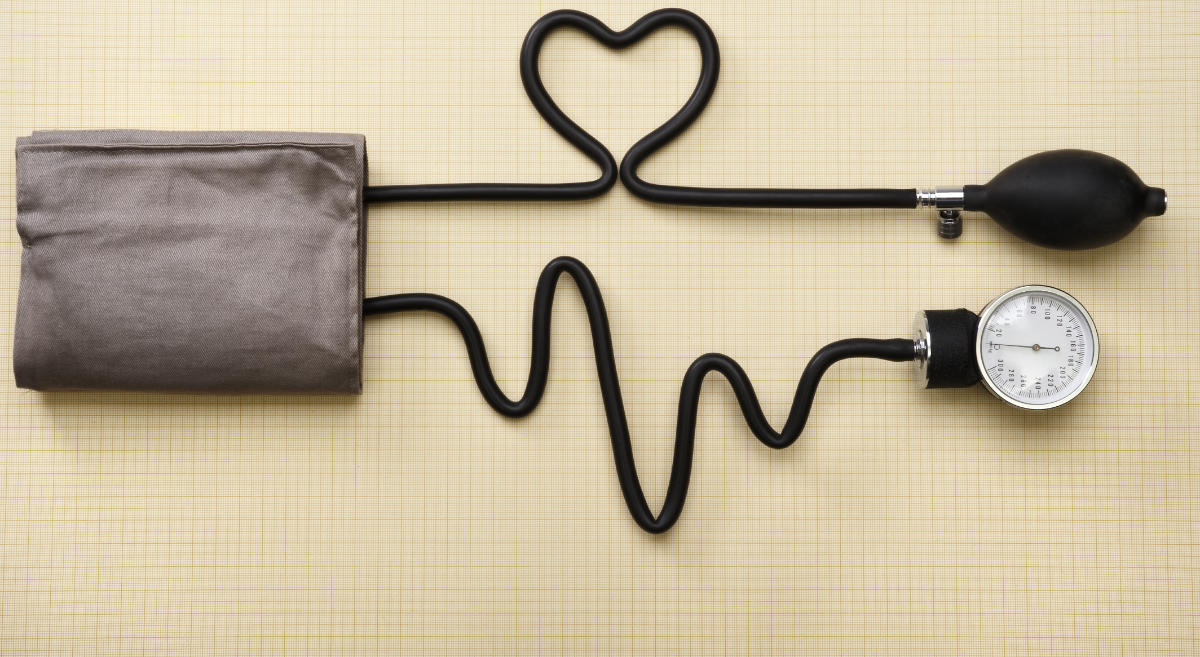High blood pressure is often called a ‘silent killer’ because, if left untreated, it can increase your risk of developing a number of serious long-term health conditions such as coronary heart disease and kidney disease. Knowing how to lower your blood pressure through simple, effective lifestyle changes means you also lower the risk of developing complicated and life-threatening health issues.
What is blood pressure?
Blood pressure is a measure of the force that your heart uses to pump blood around your body. If it is high, your readings will sit consistently at 140 over 90 or higher.
The tricky thing about high blood pressure is that it often doesn’t cause any signs or symptoms, so the only way to know your risk is to have yours measured by your GP.
If your reading is high, doctors can help you to keep your it to a safe level by prescribing certain medications, but lifestyle changes can help to combat the issue too.
Measuring your blood pressure
Do you know what your blood pressure is? If not, you could be one of the four million people under the age of 65 in the UK, including 1.3 million aged under 45, living with untreated high blood pressure.
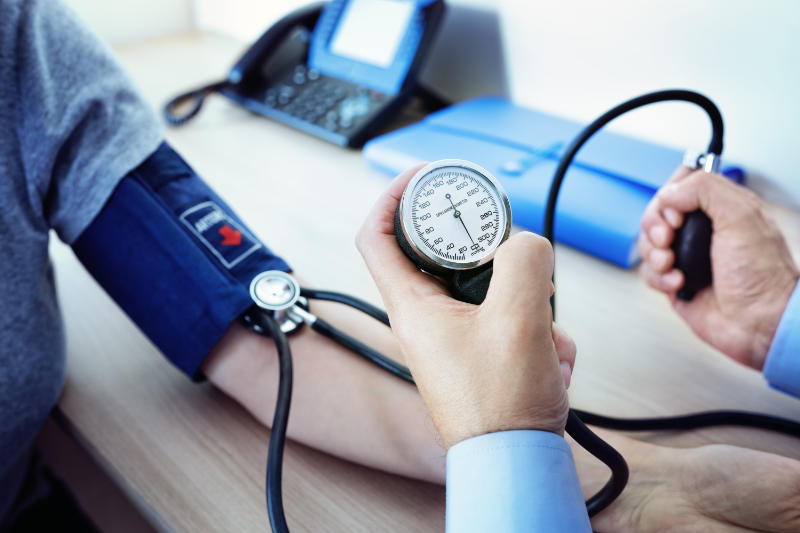
The British Heart Foundation has urged people to get their blood pressure tested, whether at home, in a pharmacy, or a GP surgery. It comes after BHF analysis estimated four million people under the age of 65 are unknowingly living with the potentially dangerous condition.
Unless a doctor tells you otherwise, your blood pressure should be below 140/ 90. According to the charity, it’s estimated that just over a quarter of UK adults – around 14.4 million people – have high blood pressure, and of these, around nine million have been diagnosed with the condition by their GP.
How to lower blood pressure
Fortunately, it can be easily treated by a combination of simple lifestyle changes and medication, depending on the individual.
“Getting your blood pressure under control is one of the most important things you can do to reduce your risk of having a heart attack or stroke,” says Simon Gillespie, chief executive of the BHF. “Millions of adults of all ages are living with untreated high blood pressure – a ticking time bomb that puts their future health in jeopardy.
“Having your blood pressure checked takes less than five minutes, but it is all too easy to put it on the back burner in our hectic day-to-day lives. That’s why we’re urging everyone to take a moment this month and get their pressure checked – it could ultimately save your life.”
1. Lose weight to lower blood pressure
If you’re overweight or obese, losing weight is one of the most effective things you can do to lower your blood pressure. For some people, losing weight is all that’s needed to get their readings down to a normal level.
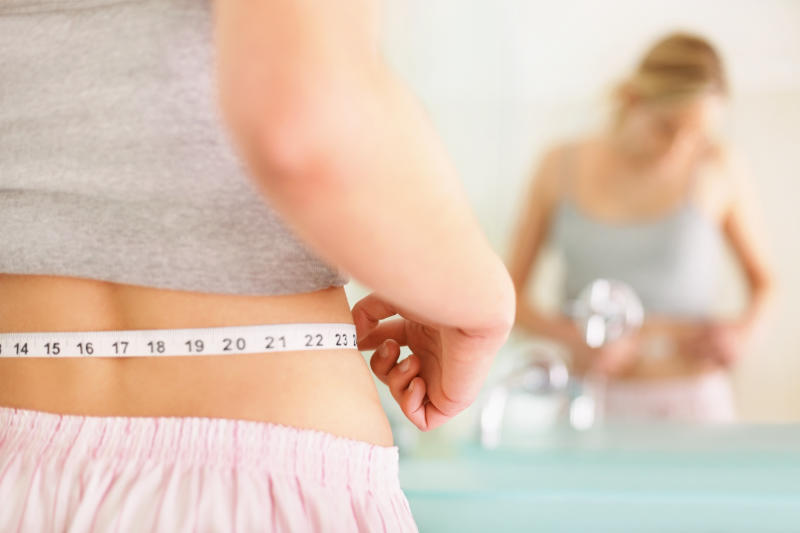
Losing weight, if necessary, can help reduce the risk of a range of health problems. Blood Pressure UK says the best way to lose weight is to choose more low-fat and low-calorie foods, and increase physical activity.
Safe and sustainable weight loss can be achieved through a healthy diet and regular exercise, and some people find that sticking to a calorie limit can help them to keep track of their intake.
“Men should have a waist that is less than 80cm (31.5in) while women should aim to be under 94cm (37in),” says GP Dr Carrie Ruxton, speaking on behalf of the Tea Advisory Panel.
Recommended: 10 easy ways to lose weight quickly and safely.
2. Be active and exercise for 150 minutes each week
It’s no secret that exercise is good for you and lowering your blood pressure is just one of its many benefits. A 2013 study found that inactive older adults who took part in daily aerobic exercise were able to significantly reduce their blood pressure over time.
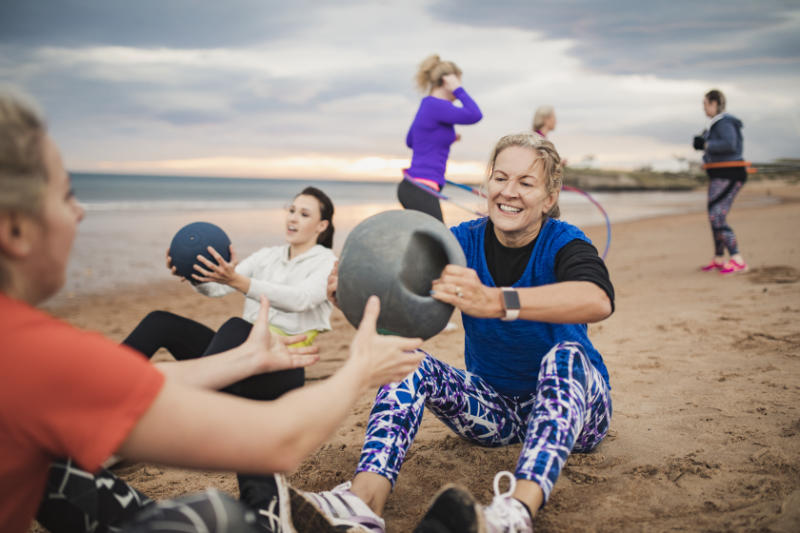
Being moderately active for 30 minutes five times a week can keep your heart healthy. If finding the time’s a problem, remember that every little helps, and think about how to be more active in your daily life. Any activity that leaves you feeling warm and slightly out of breath is ideal, whether that’s using the stairs instead of taking the lift, or simply doing some hard work in the garden.
“Aerobic exercise is best for your heart and circulation, so get out for a jog, take up dancing, use the stairs more often or take a swim,” says Ruxton. “Experts suggest that at least 30 minutes a day is optimal.”
Try to do some moderate-intensity activity every day and build up to at least 150 minutes per week, in bouts of 10 minutes or more.
Recommended: Keep fit over 50 – how much exercise should you do over the age of 50?
3. Eat beetroot to lower blood pressure
Putting more purple on your plate could help to cut your heart risk. “Clinical trials show that beetroot is rich in nitrates which the human body converts into biologically active nitric oxide,” says Ruxton.
“This chemical relaxes and dilates blood vessels allowing blood to flow more freely.”
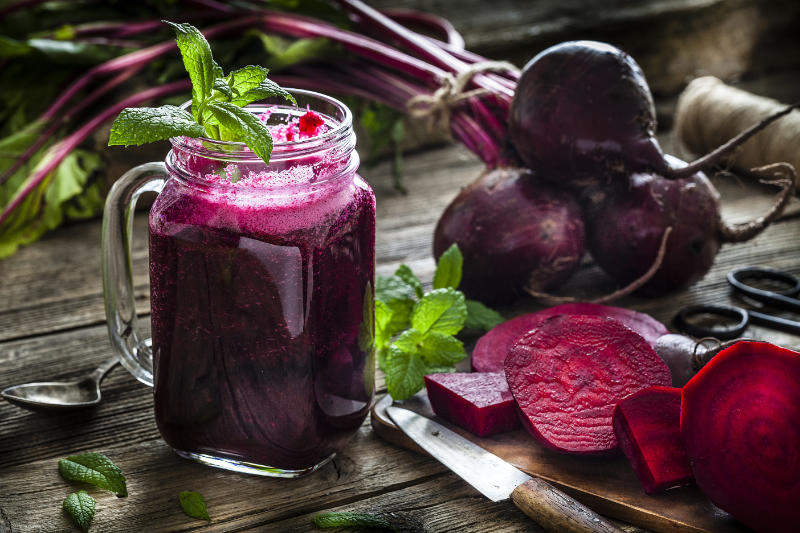
Try a delicious beetroot salad or soup, or add some of the root vegetable to your juices and smoothies.
Recommended: The health benefits of eating rye bread.
4. Cut down on alcohol consumption
The start of a new year is a great time to think about limiting or saying goodbye alcohol completely.
Drinking too much can raise blood pressure for various reasons, including the tightening of blood vessels and an increase of fats in the blood, which can harden arteries. If you drink alcohol, stick within the recommended limits – no more than 3–4 units a day for men and no more than 2–3 for women.

“While the odd glass of red wine could be helpful to your heart, regular bouts of drinking are definitely not,” says Ruxton. “Cutting back on alcohol can also save on calories, which can help you to lose weight.
“Try going dry for a month or set aside several alcohol-free days a week. Failing that, alternate diet soft drinks between your regular tipple when you’re out.”
A cup of caffeine-free tea could help too. “Hibiscus tea is particularly effective for those with high blood pressure. A study in the Journal of Hypertension found that this colourful tea could significantly lower blood pressure,” Ruxton adds.
Recommended: Beyond Dry January: How to reassess your relationship with alcohol in the long term.
5. Reduce the amount of salt in your diet
Salt encourages your body to retain water which puts strain on your kidneys, arteries, heart and brain, and raises your blood pressure, according to Blood Pressure UK.
Salt is a major culprit because it reduces the kidneys’ ability to remove water from the bloodstream, and the extra fluid can raise blood pressure.
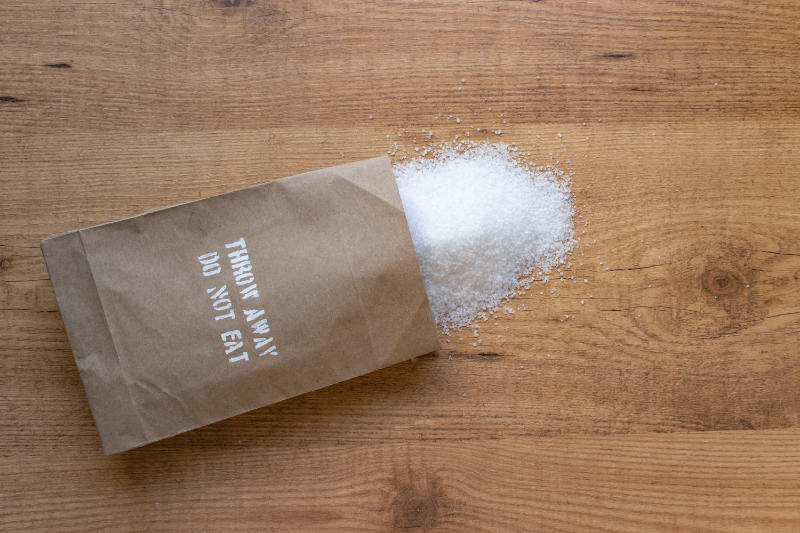
As too much salt raises your blood pressure, so eat as little as possible. BPUK says some people with high blood pressure may even be able to avoid taking blood pressure medicication simply by cutting down on salt (always talk to your GP before stopping or changing any medication). It points out most of the salt we eat isn’t what’s added to food at the table, but is in prepared foods like bread, breakfast cereals and ready meals. So check food labels and choose low-salt options when possible.
If you have high blood pressure, try not to cook with salt and don’t have it as an option on the table.
It’s also a good idea to cut back on processed foods, as these can contain a lot of hidden salt too. Instead, prepare your own meals and buy fresh meats, fruits, and vegetables. If you feel like your food is lacking in flavour, try adding fresh herbs or spices instead.
6. Eat a healthy balanced diet
As the BHF recommends, eat your 5-a-day fruit and vegetables. Eating a range of different fruits and vegetables – try ‘eating the rainbow’ by making sure they’re lots of different colours – helps to lower blood pressure. An adult portion is 80g, or roughly the size of your fist, according to the NHS.
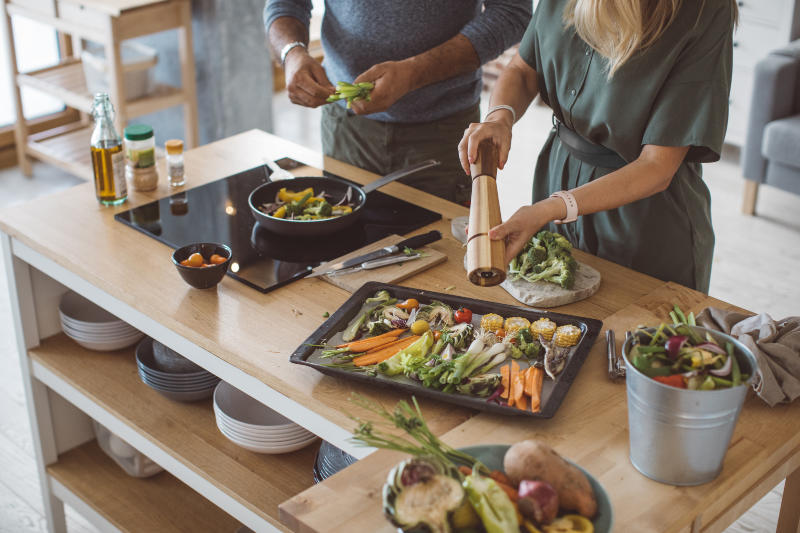
Top tip: use the Eatwell Plate to guide the proportions you include from each food group. In particular, include a variety of fruit and vegetables.
7. Take medication as prescribed
Most people will need to take more than one type of medicine to control their blood pressure. Don’t stop taking your medication without consulting your GP first.























































